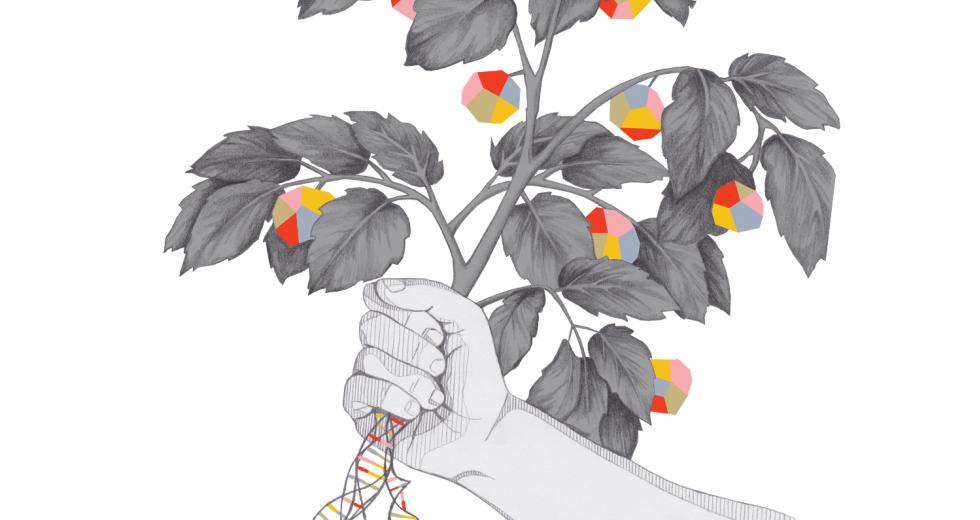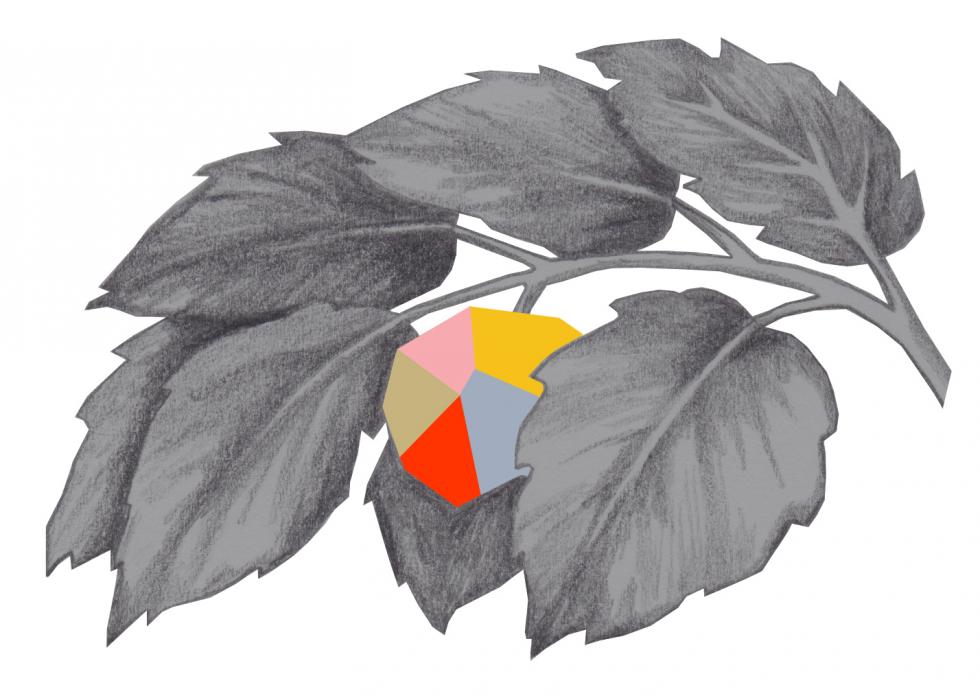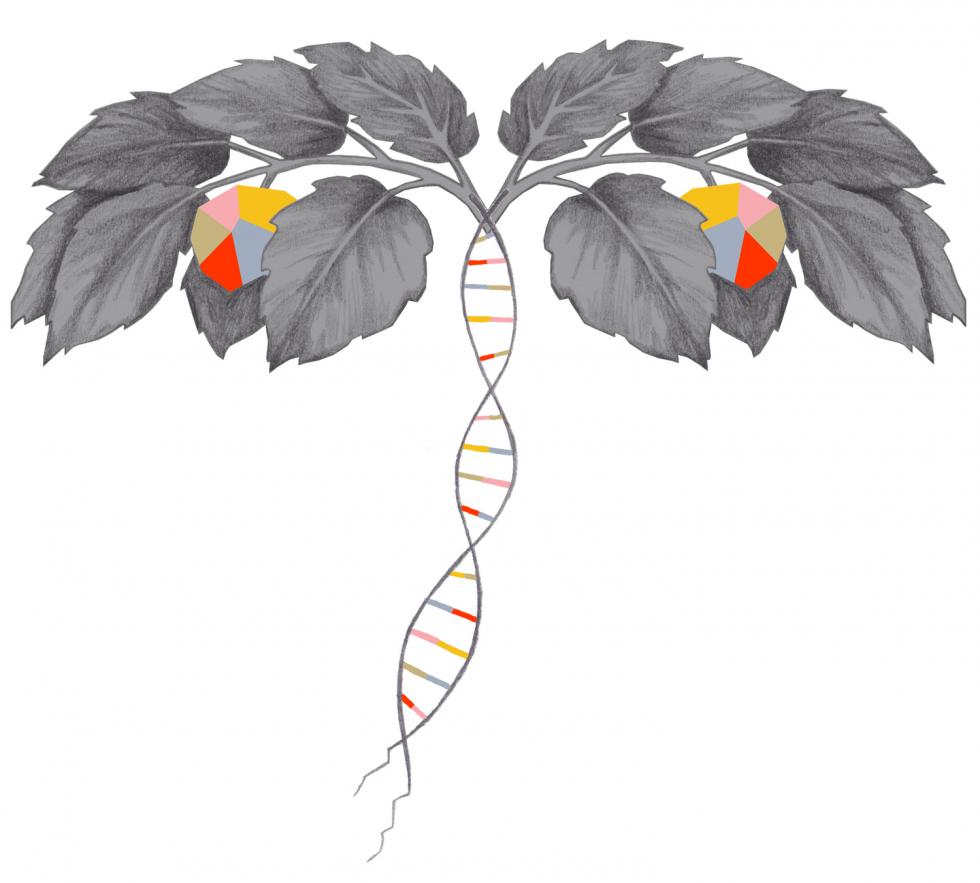Inside the Seed Biotechnology Center at UC Davis, Dr. Allen Van Deynze points out the progress of the genome sequencing of Moringa oleifera — a colorful stream of data points shows on his computer screen.
The moringa tree is an important source of nutrition in Africa and India. It stocks more vitamin A than carrots, more calcium than milk and more iron than spinach. The tree is native to northern India, but grows throughout tropical and subtropical regions in Asia, Africa and Latin America. With its high nutritional value and year-round harvestability, the moringa is a critical source of food for impoverished communities in developing countries. In order to capitalize on its nutritional value, multiple varieties of the moringa, specifically suited to the various climates and conditions where they are grown, are needed.
Related: Woodland lures agribusiness and global trade to this once-sleepy town
That’s where the work of Van Deynze, director of research at UC Davis’ Seed Biotechnology Center and associate director of the university’s Plant Breeding Center, comes in. Once the moringa’s genome is sequenced, Van Deynze will have a genetic map of its DNA, which tells him exactly which genes are responsible for which traits, explains Dr. Kent Bradford, director of the Seed Biotechnology Center.
Research taking place at UC Davis, a world leader in plant science and agricultural research, is a vital player in a vast ecosystem that makes the Capital Region one of the most influential innovative hubs in the vegetable seed industry. Eight of the world’s 10 largest vegetable seed companies are strategically located near UC Davis. Additionally, more than 80 seed industry companies are within 100 miles, and 300 are within 300 miles of the university, according to Van Deynze.
“Plant breeding is absolutely essential. Today’s best varieties will fail in the next five years because of disease.”Dr. Allen Van Deynze, director of research, UC Davis’ Seed Biotechnology Center
The work taking place here is of global significance, given that the Food and Agriculture Organization of the United Nations estimates that to feed a growing population, food production will need to increase 70 percent by 2050. Precious water resources, lack of arable land and food distribution challenges compound the issue — and as organisms naturally evolve, new strains of pests and diseases arise. All of which begs the question of how we develop and commercialize vegetable crops that can nutritiously feed the world.
“Plant breeding is absolutely essential,” Van Deynze says. “Today’s best varieties will fail in the next five years because of disease.”
A FIGHT AT THE TABLE
When the conversation turns to food and biotech, genetically modified organisms typically leap to the forefront of many people’s minds. Yet the technology Van Deynze and other researchers are focused on has its roots in traditional selective breeding, the field of genetics widely recognized through Gregor Mendel’s work on the laws of inheritance in pea plants.
Traditional methods take time, and the research can be daunting. When a desired trait is selected from the wild, it is randomly passed along to the plant’s offspring and can take years to surface. On average, it takes more than a decade to develop a particular trait and bring a new vegetable variety to market.
But with a genetic map, samples from seedlings can be tested for the desired genes — instead of spending years growing thousands of plants to visually determine if a given trait is there. Called marker assisted breeding, this is one of the leading technologies used by researchers and the vegetable seed industry to dramatically reduce the time it takes to develop new varieties.
Related: How UC Davis is Bolstering Region’s Agtech
Related: The peculiar world of fig traders and their trees
This process is far more lucrative for the vegetable seed industry than tackling genetically modified organisms. GMOs have been mired in controversy since Davis-based Calgene (which has since sold to Monsanto) released the first GM crop to hit the market, a tomato into which a genetically engineered gene had been inserted. Dubbed the Flavr Savr, the tomato was marketed for keeping its firm skin longer, allowing it to ripen on the vine and develop a fuller flavor.
But the tomato saw a decline in sales after media attention ignited public concern over transgenics — the insertion of a gene, often from an unrelated species, to produce a desired trait. The technology has sparked controversy as scientists, activists and the general population argue over whether global food and nutrition needs warrant technology that modifies the genetic code of life.
The challenge of public perception is compounded by a prohibitive regulatory system. It can take years and cost up to $100 million to bring a single genetically engineered crop to regulatory approval. For the vegetable seed industry, the economics aren’t feasible. Revenue generated from most vegetable seed varieties cap around $800,000. That’s insubstantial revenue, compared to field crop seeds (many of which are genetically modified) that generate revenue in the billions, Bradford explains.
Bradford says the potential for transgenics in plants is enormous. He points to a UC Davis project with flowering plants that, through transgenics, could create vegetables that flower uniformly on command. In warmer climates, vegetables that flower prematurely don’t produce food. Manipulating the DNA of the plant would enable it to provide substantial yields of food and seed in a wider array of climates.
“You can put in a gene that triggers flowering and spray it with something like sugar to turn it on. This can’t really be done with traditional plant breeding,” he says.
In a 2015 study by the Pew Research Center, 88 percent of scientists in the American Association for the Advancement of Science — the world’s largest general scientific society — said GM crops are safe for human consumption. The science has proven thousands of times there is no difference that is found between genetically modified crops and those produced through non-GMO methods, Van Deynze explains.
The controversy prevents researchers from developing transgenic technologies beyond the laboratory and into marketable applications in vegetable seed production. “There are so many awesome projects on the shelf beneficial for reducing pesticides and all kinds of things that we just can’t find a way to do without using transgenics,” Bradford says.
But only 37 percent of U.S. adults trust GMOs, according to that same study. Even one member of the Flavr Savr team is skeptical. Belinda Martineau is a former genetic engineer with Calgene who helped develop the tomato and is now a senior writer at the Center for Healthcare Policy and Research at UC Davis. She says GM crops have the potential to create human allergens, mutations and toxicity.
While under regulatory review, the Food and Drug Administration questioned how the Flavr Savr developers knew they inserted only the intended DNA. What they found surprised Martineau. It turned out much more than the targeted DNA was inserted in approximately 20 percent of the genetically modified tomatoes, she explains. “That was 25 years ago; this ‘extra DNA’ problem still has not been solved,” Martineau says.
In 2012, the revolutionary gene editing technology, CRISPR, hit the market. Introduced by UC Berkeley scientist and co-inventor, Jennifer Doudna, the readily accessible and cost-effective technology allows for the genetic modification of DNA without the use of transgenics. Instead, CRISPR works by turning genes on or off, or by rewriting a portion of genetic code. The democratization of the technology is sweeping across the agricultural, pharmaceutical and biomedical industries. It could be a boon for the vegetable seeds industry, with the potential to enable vegetable breeders to improve their varieties and more readily bring them to market, Bradford says.
“Gene editing is exciting because it’s so efficient, way more than GMO, so we can make changes very directed and efficiently in most crops,” says Van Deynze. “[It] results in a variety that looks just like plant breeding, and I couldn’t tell you if it happened naturally or not.”
To date, gene-edited varieties are being evaluated on a case-by-case basis. In 2016, a white button mushroom engineered at Penn State became the first CRISPR-edited organism to be deregulated by the U.S. Department of Agriculture. Scientists and companies in the vegetable seed industry hope that leads to a growing consumer acceptance and adoption in the marketplace.
Meanwhile, companies in the private sector like HM Clause and Bayer CropScience focus their vegetable seed research and development on improving the efficiency of traditional plant breeding, such as genomic mapping, cell biology and biochemistry. The technologies are well understood and noncontroversial, and plant breeding is not subject to regulations.
CULTIVATING COLLABORATION
In the Capital Region, the vegetable seed industry is united through Seed Central, a public-private partnership launched in 2010 by the UC Davis Seed Biotechnology Center and Francois Korn, CEO of SeedQuest, a website that aggregates industry insight. For an annual premium membership of $2,500, companies small and large can join Seed Central, bridging communication between the industry and UC Davis, stimulating collaborative research. The private sector gains access to new technology from UC Davis, and they provide the university with insight into market needs.
Seed Central also helps companies maintain a solid pipeline of talent and introduces university students to potential employers. Through Seed Central, UC Davis students meet leaders in the global seed industry through monthly networking events. “That results in a constant flow of internships, shadowing, trips to companies and employment,” says Korn. It’s a constant source of well-educated talent for the local private sector as well. For example, approximately 25 percent of Bayer’s 140 employees in its West Sacramento vegetable seed R&D center are UC Davis graduates. More than half are millennials, capable of handling the technology the industry requires, says Peter Visser, global head of trait development, Bayer CropScience Vegetable Seeds in West Sacramento.
As premium Seed Central members, private sector companies receive reduced rates on overhead to fund early-stage technology research at UC Davis. It drives a constant flow of technology the university can license, and the private sector can develop with the goal to commercialize new vegetable varieties through plant breeding that are suited to global market needs and today’s climate conditions.
Sakata Seed America has an R&D facility and research station in Woodland, and is a member of Seed Central. “It’s a very productive use of our time to interact with industry, academia and future employees,” says Jeff Zischke, senior director of research and development at Sakata. “Also, it gives us that networking time necessary to put the right people in touch with [those who] are leading consortia at UC Davis.”
Sakata Seed America is part of a consortium funding early research on carrot varieties to address the different market needs of seed producers, carrot growers and consumers, Zischke explains. In addition to consortiums, individual companies can fund specific projects — HM Clause in Davis is currently funding early-stage research to identify traits that would improve texture and flavor in melons. Consortium funding by Seed Central members also helped sequence the spinach genome to address resistance to downy mildew, which increasingly infects California’s spinach market.
This early-stage technology results in downstream economics for UC Davis. Once it’s licensed to the private sector, UC Davis may receive upfront licensing fees, milestone payments as the technology is developed, and royalties on net sales once a product is on the market, explains Dushyant Pathak, associate vice chancellor of research and executive director, UC Davis Venture Catalyst.
UC Davis also develops its own plant varieties patents, generating a large source of revenue, which can be reinvested in university research and technology development. Seventy plant variety patents managed by UC Davis generated nearly $14 million in fiscal years 2015-2016, according to UC Davis data provided by Pathak. UC Davis’ plant variety patents resulted from traditional plant breeding in general, and none from GMOs or gene edited technology, Pathak says.
But incubator space — where entrepreneurs and startups can cultivate ideas into marketable products and businesses, and spur local economic growth — are lacking in the Capital Region. In response, the UC Davis-HM Clause Life Science Innovation Center opened in 2014. The space provides UC Davis faculty and students, and biotechnology entrepreneurs and startups, a space to attract venture capital (also lacking in the Capital Region) while they remain close to the university and grow their ideas into successful businesses, explains Cecilia Chi-Ham, director of Innovation, Intellectual Property, and R&D Strategy at HM Clause. And in December 2017, Bayer CropScience opened the newest incubator space in the region at its West Sacramento facility, the CoLaborator.
Incubators and innovative hubs throughout California are being united as a single network called Verde Innovation Network for Entrepreneurship through a $500,000 grant received by AgStart and UC Agriculture and Natural Resources in September 2017, explains John Selep, president of AgTech Innovation Alliance, a nonprofit, which sponsors the efforts of AgStart.
The value of those connections is where the industry can thrive, Chi-Ham explains, envisioning a future of globally connected regions. And we’re beginning to see that, she says, adding that companies from abroad want to come and incubate at the UC Davis-HM Clause innovation center to be a part of this strong agricultural market.
“So when we think of innovation, we can’t just think of it being in Davis or being in Sacramento, Chi-Ham says. “We’re really excited because agriculture is global. We all eat.”







Comments
Flavr Savr tomato did not die because of any anti-GMO sentiment. It died because Calgene could not produce and deliver enough marketable FlavrSavr tomatoes to the market. In addition, their costs were way out of line for the marginal improvement in quality that the FlavrSavr provided.
I enjoyed reading “Seeds of Innovation” and agree that having an organism’s genome sequence in hand is a powerful tool for understanding the genetics of that organism. But, as a geneticist, I think it’s important to point out that the following statement in the story is incorrect: "Once the moringa's genome is sequenced, Van Deynze will have a genetic map of its DNA, which tells him exactly which genes are responsible for which traits…."
Simply having the sequence of an organism's genome does not provide anywhere near the amount of information needed to tell us exactly which genes are responsible for which traits; gathering that information will likely take decades of additional research. As an example, the human genome sequence was obtained/released 17 years ago but, despite the amazing amount of information we have since learned from research studies about some human genes and their links to some diseases, etc., we still have much, much more to learn about most human genes and the traits they are responsible for.
I’d also like to point out that while the article indicates that I say “GM crops have the potential to create human allergens, mutations and toxicity,” the regulatory agencies in the U.S. and elsewhere (and many other scientists) say the same. At EPA, for example, foreign proteins produced in new genetically engineered (GE, AKA GM) crops are tested in various ways to help ensure that they are not allergenic to humans. There has been only one GE protein in a commercialized crop that I know of that failed those tests, and because of those test results the GE corn producing it—StarLinkTM—was originally only approved for animal, not human, consumption; soon after its commercialization, however, it was pulled off the market because traces of it were found in human food products.
As for the potential for creating mutations, according to Glenn et al. (2017 Crop Science 57: 2906-2921) companies like Monsanto now check the GE plants in their product development pipeline to make sure that the genetic engineering process did not inadvertently cause a mutation at the site in the recipient’s genome where the foreign gene(s) was inserted. But Golden Rice “event” GR2-R1 is an example of a GE crop in which the insertion of the foreign genes caused an unintended mutation in the rice genome; and that unintended mutation was not discovered until that Golden Rice trait was being introgressed into varieties of rice that farmers were interested in growing (Bollinedi et al. PLoS ONE 2017). GR2-R1 has since been eliminated from the Golden Rice “commercial” pipeline.
Monsanto scientists are also well aware of the “extra DNA” problem that I mentioned in “Seeds of Innovation” and, according to Glenn et al. (2017 Crop Science 57: 2906-2921), those scientists conduct molecular screens to identify, in order to eliminate, any plants into which unintended DNA was inadvertently inserted.
Although genetic engineering technology(ies) are obviously not perfect, they are definitely powerful tools that can be used for improving crops for human food, animal feed or other purposes. But because they are not perfect, we need sufficient regulation of them to ensure that our food supply is safe.